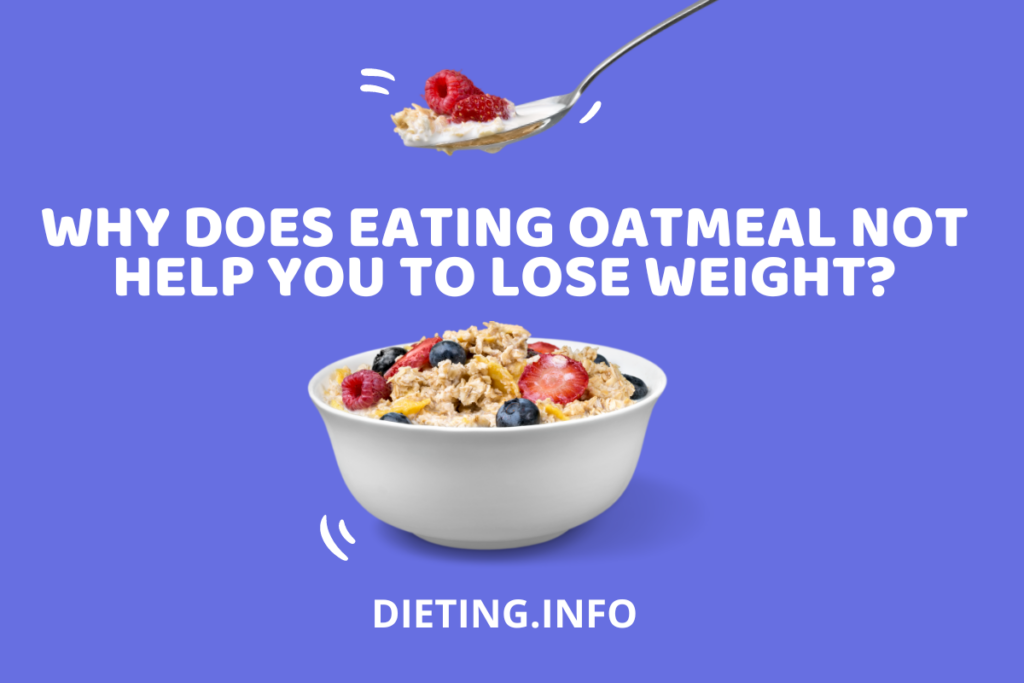
Why Does Eating Oatmeal Not Help you to Lose Weight?
In the quest for a healthier lifestyle and weight loss, oatmeal has often been championed as a must-have superfood. Its high fiber content, ability to lower cholesterol, and general heart health benefits have made it a staple in many diets. Yet, some individuals find that incorporating oatmeal into their daily routine does not aid in losing weight, and in some cases, it might even contribute to weight gain. This conundrum has left many oatmeal enthusiasts puzzled and searching for answers. Why, despite its health benefits, does oatmeal not help everyone to lose weight? Let’s dive into the complexities of oatmeal and its impact on weight management.
The Caloric Misconception
The first factor to consider is the caloric content of oatmeal. While oatmeal itself is relatively low in calories, the add-ons that enhance its flavor, such as sugar, honey, dried fruits, or nuts, can significantly increase the calorie count. A bowl of oatmeal can quickly transform from a 150-calorie meal to a 300-calorie dish, or even more, depending on the generosity of these toppings. For those not diligently tracking their caloric intake, this can lead to inadvertent overeating.
The Glycemic Index Factor
Another aspect to consider is the glycemic index (GI) of the oatmeal being consumed. The GI measures how quickly a food causes our blood sugar levels to rise. Instant oatmeal, which is more processed, tends to have a higher GI, leading to rapid spikes in blood sugar levels. This can trigger a cycle of high blood sugar followed by a crash, inducing hunger and cravings for more high-carb foods. On the other hand, steel-cut oats or old-fashioned rolled oats have a lower GI, providing a more stable release of energy.
Individual Metabolic Responses
Individual metabolic responses play a crucial role in how oatmeal affects weight. For some, the high fiber content in oats aids in feeling full longer, reducing overall calorie intake. However, others may not experience the same level of satiety, leading to additional calorie consumption through other foods. Furthermore, individuals with sensitivities to grains or specific fiber types might find that oatmeal exacerbates bloating and discomfort, contributing to a less active lifestyle.
Portion Control Pitfalls
Portion control is another critical factor. A standard serving of oatmeal is half a cup of dry oats, which expands when cooked. It’s easy to overlook this and serve more than the recommended portion, especially when the oatmeal is mixed with various toppings. This underestimation can result in consuming more calories than intended, hindering weight loss efforts.
Addressing the Oatmeal Paradox
To harness the benefits of oatmeal without hampering weight loss efforts, consider the following strategies:
- Mind the Add-ons: Opt for natural sweeteners like a small amount of fruit to enhance flavor without significantly boosting the calorie count. Avoid sugary toppings and heavy creams.
- Choose Wisely: Select steel-cut oats or old-fashioned rolled oats over instant varieties to benefit from a lower GI and more nutrients.
- Monitor Portions: Measure out your oats before cooking to ensure you’re sticking to the recommended serving size.
- Understand Your Body: Pay attention to how your body responds to oatmeal. If you find it triggers cravings or doesn’t keep you satisfied, it might not be the ideal food for your weight loss journey.
In conclusion, while oatmeal can be a nutritious component of a balanced diet, its effectiveness for weight loss varies from person to person. By understanding and adjusting for factors such as caloric content, glycemic index, individual metabolic responses, and portion control, you can better align your oatmeal consumption with your weight management goals. Oatmeal doesn’t have to be off the menu, but like any food, it requires mindful eating and consideration within the context of your overall dietary pattern.